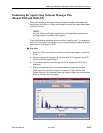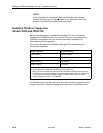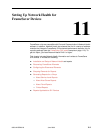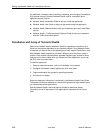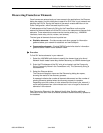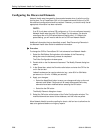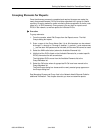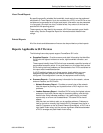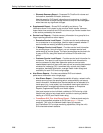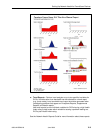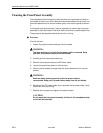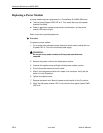
Setting Up Network Health for FrameSaver Devices
11-7
9820-A2-GB20-20
June 2000
About Trend Reports
By specifying specific variables like bandwidth, trend analysis can be performed
and shown on Trend Reports. Up to ten variables for a DLCI, or ten DLCIs on one
variable can be generated on a single trend report. Information can be presented
in a line graph, pie chart, bar chart, or table format. Any amount of time can be
specified for the reporting period.
These reports can help identify the reasons a DLCI has acquired a poor Health
Index rating. See the Exceptions Report for information about Health Index
ratings.
Printed Reports
All of the charts and tables seen online can also be provided on printed reports.
Reports Applicable to SLV Devices
The following frame relay reports support FrameSaver SLV units:
H Exception Reports – Provide summary and detail information that identifies
DLCIs with the highest incidence of errors, high bandwidth utilization, and
trends.
These reports identify those DLCIs that have exceeded a specified number of
accumulated
exception points
. It is a good idea to run this report daily so that
DLCIs having the most problems can be attended to first. DLCIs contained on
this report need immediate attention.
If a DLCI suddenly shows up on these reports, check whether any new
equipment has been added to the network and whether it is properly
configured. If its configuration is correct, the equipment could be faulty.
H Summary Reports – Provide summary information for the network, volume
and error leaders, and DLCI traffic.
— Network Summary Report – Provides an overall view of the network.
Use this report for planning and to predict when a DLCI might run into
problems.
— Leaders Summary Report – Identifies DLCIs having the highest volume
and errors. High traffic volume may be increasing latency, and the high
Health Index rating indicates problems. It is a good idea to run these
reports daily so a norm can be established. The same DLCIs should
appear.
Use this chart and table to alert you to possible problems. Problems to
look for include: a normally high-volume DLCI is dropped from the list, a
new DLCI appears on the list (check Element Summaries), a DLCI has a
high Health Index rating, but low volume, significant differences between
a DLCI’s average and peak Health Index rating.



